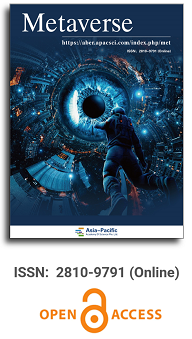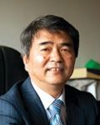
Asia Pacific Academy of Science Pte. Ltd. (APACSCI) specializes in international journal publishing. APACSCI adopts the open access publishing model and provides an important communication bridge for academic groups whose interest fields include engineering, technology, medicine, computer, mathematics, agriculture and forestry, and environment.



Objective reality in the digital age
Vol 4, Issue 2, 2023
Download PDF
Abstract
This paper explores the complexities of objective reality in the digital era, using André Bazin’s theory of realism as a lens. As digital advancements, such as deepfakes and immersive technologies, blur the boundaries between the tangible and virtual, they prompt a re-evaluation of Bazin’s principles on the ‘ontology of the photographic image’. The study critically examines how these digital innovations both challenge and enrich Bazin’s notions of unmediated representation, underscoring the need for a contemporary dialogue on the implications of digital technologies for our understanding of truth and reality.
Keywords
References
- Lowenstein A. The surrealism of the photographic image: Bazin, Barthes, and the digital “Sweet Hereafter”. Cinema Journal 2007; 46(3): 54–82. doi: 10.1353/cj.2007.0024
- Murray S. Digital images, photo-sharing, and our shifting notions of everyday aesthetics. Journal of Visual Culture 2008; 7(2): 147–163. doi: 10.1177/1470412908091935
- Cribb CP. “To believe in an image (again)”: The politics of the index, André Bazin’s Ontology of Sense, and the antidote to digital skepticism. Cultural Politics 2021; 17(3): 314–332. doi: 10.1215/17432197-9305391
- Bazin A. What is Cinema? University of California Press; 1967. 183p.
- Laney B. Bringing the dead back to life: Preparing the estate for a post-mortem acting role. Estate Planning & Community Property Law Journal 2019; 12: 349–436.
- Ravetto-Biagioli K. Dancing with and within the digital domain. Body & Society 2021; 27(2): 3–31. doi: 10.1177/1357034X20979033
- Milgram P, Kishino F. A taxonomy of mixed reality visual displays. IEICE Transactions on Information and Systems 1994; 77(12): 1321–1329.
- Vaidhyanathan S. Antisocial Media: How Facebook Disconnects Us and Undermines Democracy. Oxford University Press; 2018. 288p.
- Lanier J. You Are Not a Gadget: A Manifesto, 1st ed. Alfred A. Knopf; 2010. 224p.
- Dena C. Transmedia Practice: Theorising the Practice of Expressing a Fictional World across Distinct Media and Environments [PhD thesis]. University of Sydney; 2009.
- Wagner TL, Blewer A. “The word real is no longer real”: Deepfakes, gender, and the challenges of ai-altered video. Open Information Science 2019; 3(1): 32–46. doi: 10.1515/opis-2019-0003.
- Marshall CC. The future of annotation in a digital (paper) world. In: Harum S, Twidale M (editors). Successes and Failures of Digital Libraries, Proceedings of the 35th Annual Clinic on Library Applications of Data Processing; 22–24 March 1998. University of Illinois Urbana-Champaign; 2000. pp. 97–117.
- Chen RS. Bazin at work: The concept of realism in Chinese-language films. Journal of Chinese Cinemas 2010; 4(1): 57–64. doi: 10.1386/jcc.4.1.57/7table
Supporting Agencies
Copyright (c) 2023 Safa Tharib

This work is licensed under a Creative Commons Attribution 4.0 International License.

This site is licensed under a Creative Commons Attribution 4.0 International License (CC BY 4.0).

Prof. Zhigeng Pan
Professor, Hangzhou International Innovation Institute (H3I), Beihang University, China

Prof. Jianrong Tan
Academician, Chinese Academy of Engineering, China
Conference Time
December 15-18, 2025
Conference Venue
Hong Kong Convention and Exhibition Center (HKCEC)
...
Metaverse Scientist Forum No.3 was successfully held on April 22, 2025, from 19:00 to 20:30 (Beijing Time)...
We received the Scopus notification on April 19th, confirming that the journal has been successfully indexed by Scopus...
We are pleased to announce that we have updated the requirements for manuscript figures in the submission guidelines. Manuscripts submitted after April 15, 2025 are required to strictly adhere to the change. These updates are aimed at ensuring the highest quality of visual content in our publications and enhancing the overall readability and impact of your research. For more details, please find it in sumissions...






.jpg)
.jpg)

